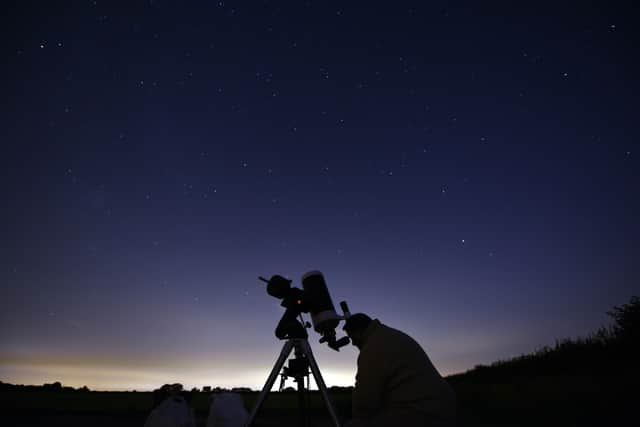Quadrantid meteor shower: is 2024 UK peak tonight, date, how to see them - what are they?
and live on Freeview channel 276
Amateur astronomers across the UK will have the opportunity to witness the year's "strongest" and "most consistent" - and the first of the new year - meteor shower later this week.
Up to 110 meteors per hour could be seen during the Quadrantid meteor shower, which experts consider to be the most active of the year. That's roughly one every 30 seconds.
Advertisement
Hide AdAdvertisement
Hide AdThe annual shower occurs when Earth's orbit around the sun passes through a debris field left by the asteroid 2003 EH1.
These small pieces of rock - often no bigger than a grain of sand - enter our planet’s atmosphere at speeds of up to 70 kilometres per second, vaporising and causing the streaks of light we call meteors. Here is everything you need to know about it.
When is the Quadrantids peak?


Quadrantid meteors have been seen streaking across the sky since 28 December, and will continue to do so until Friday 12 January.
However, for the best chances at spotting a 'shooting star', you'll want to catch the shower at its peak - on the evening of 3 and 4 January.
Advertisement
Hide AdAdvertisement
Hide AdNote that, while the Quadrantids can match the intensity of two of the year's other meteor showers - the Perseids in August and the Geminids in December - they are harder to spot, owing to the shortness of their peak.
While those more well known showers have peaks that stretch across days, the Quadrantids' peak only lasts a handful of hours, and it is difficult to predict exactly when that will occur.
What's the best way to see the Quadrantids?
Location is key, and opting for a viewing spot away from city lights will minimise light pollution. The darker the sky, the more meteors you'll be able to see. Parks, rural areas or high vantage points away from urban centres are excellent choices.
Named after the obsolete constellation Quadrans Muralis, the radiant point - the apparent spot from which the meteors appear to originate, though they can streak across any part of the sky - of the Quadrantids lies in the northern sky, near the constellation Boötes.
Advertisement
Hide AdAdvertisement
Hide AdDress warmly, even if it's not too cold initially. Nights can get chilly, especially when you're stationary. Bring blankets, chairs, snacks, and hot drinks to stay comfortable during the viewing.
Be patient. Meteor showers can be unpredictable, so allow ample time for your eyes to adjust to the darkness. Minimise the use of phones and torches to allow your eyes to adjust to the darkness for better visibility of the meteors.
Observing the Quadrantids requires patience and dedication, as the peak often occurs during the wee hours of the morning. And, of course, the temperamental British weather - especially in January - is likely to scupper any plans.
Comment Guidelines
National World encourages reader discussion on our stories. User feedback, insights and back-and-forth exchanges add a rich layer of context to reporting. Please review our Community Guidelines before commenting.
